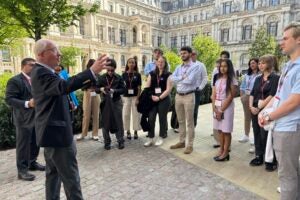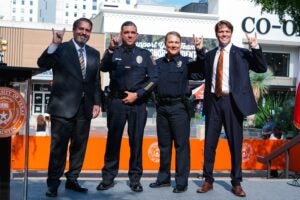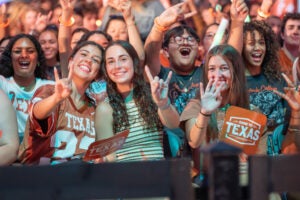Dr. Kenneth Diller, the Joe J. King Professor in Engineering and chair of the Department of Biomedical Engineering, leads the effort to maximize HSP production in laboratory tissue cultures, with a view to future clinical applications. It’s well known that tissues exposed to transient high temperatures receive long-term protection against potentially lethal stresses. That gain is attributed to increased HSP expression.
“Researchers across the world have observed the production of heat shock proteins, but there has not previously been a quantitative engineering analysis of what it takes, optimally, to produce them,” said Diller.
While his present work concentrates on determining the best temperatures and specific heating and cooling times, Diller speculates that tissues could one day be heated using ultrasound or other widely available non-invasive methods to stimulate production of the helpful proteins before surgery.
Diller and doctoral students Sihong Wang and Nicole Rylander, in collaboration with Dr. Massoud Motamedi (Ph.D. E.E. ‘88) of The University of Texas Medical Branch at Galveston, are concentrating on one specific protein — HSP70 — known to be the major molecular chaperone in the heart, brain, eye and many other vital body organs.
|
The team’s latest laboratory results have identified an optimal combination of temperature, heating time and post-heating recovery time needed to stimulate production of HSP70 in cultures of bovine heart tissue.
The window of opportunity is crucial, Diller said. One of the strict limitations of traditional heart surgery is a four-hour “safe” period. This refers to the requirement that blood flow to the immediate region around the heart not be drastically reduced for more than four hours. After that period, necrosis (tissue death) sets in. It’s been previously shown, however, that the more HSPs that are present, the less tissue dies.
“We’re bringing the tools of engineering to bear on understanding this problem to design clinical techniques that can be used to pre-condition tissues prior to surgery,” he said. “Once we understand in a rigorous engineering way the time/temperature relationship by which cells produce these molecules, and how long the window of time we have to take advantage of their presence, we’ll be able to do that. We can use the information to design protocols that could be used to stimulate the heart prior to surgery to produce a better subsequent recovery.”
The work is supported by the Abell-Hanger Foundation of Midland, Texas.




